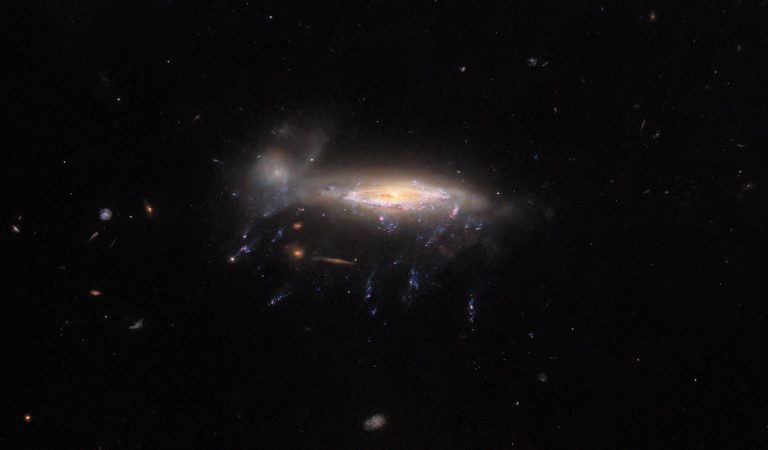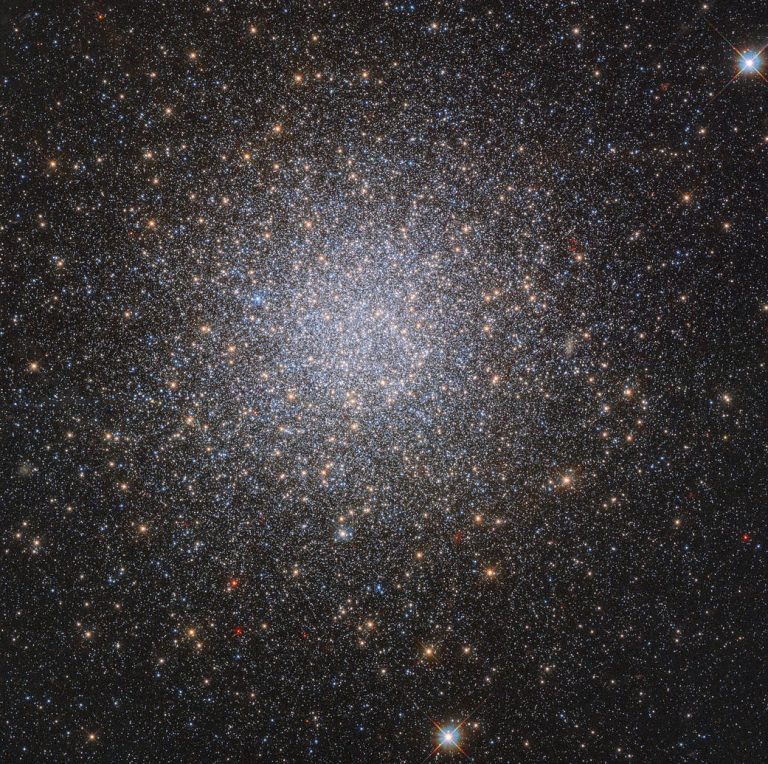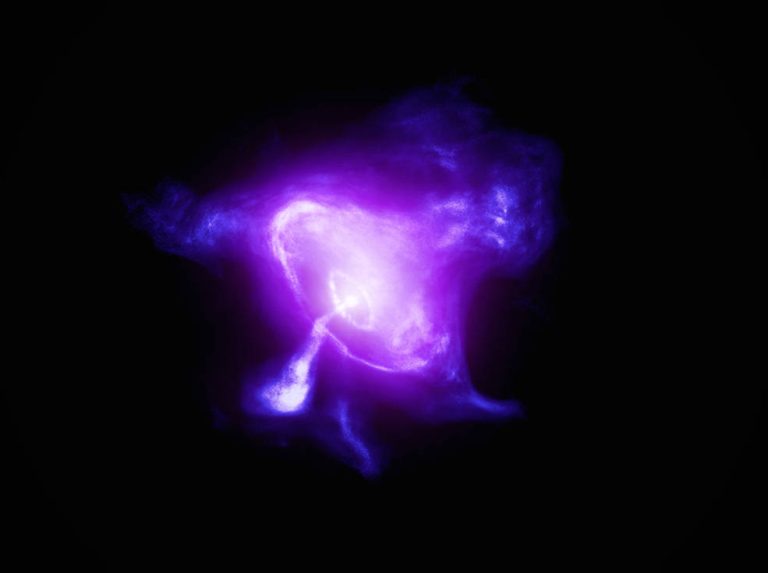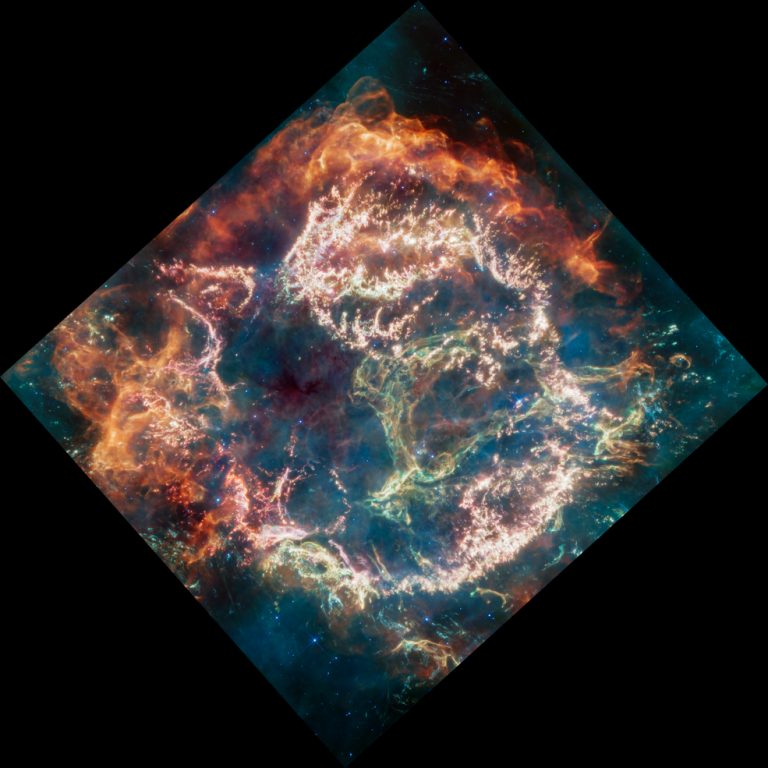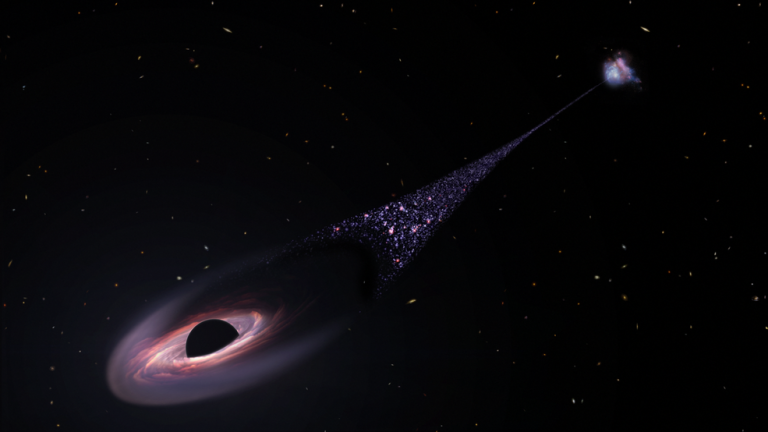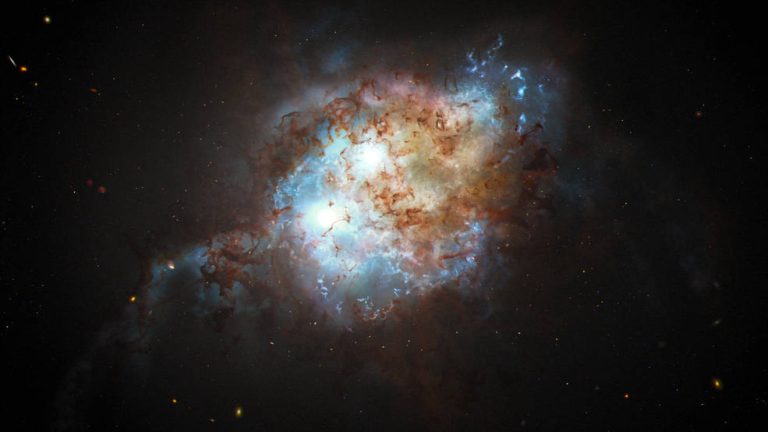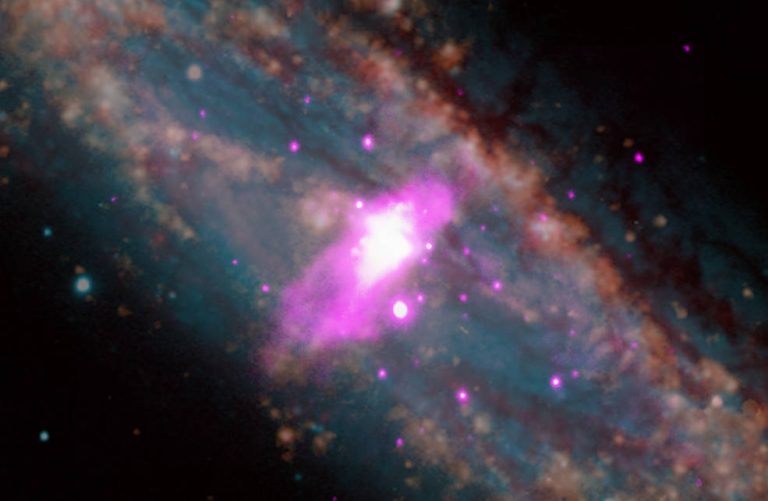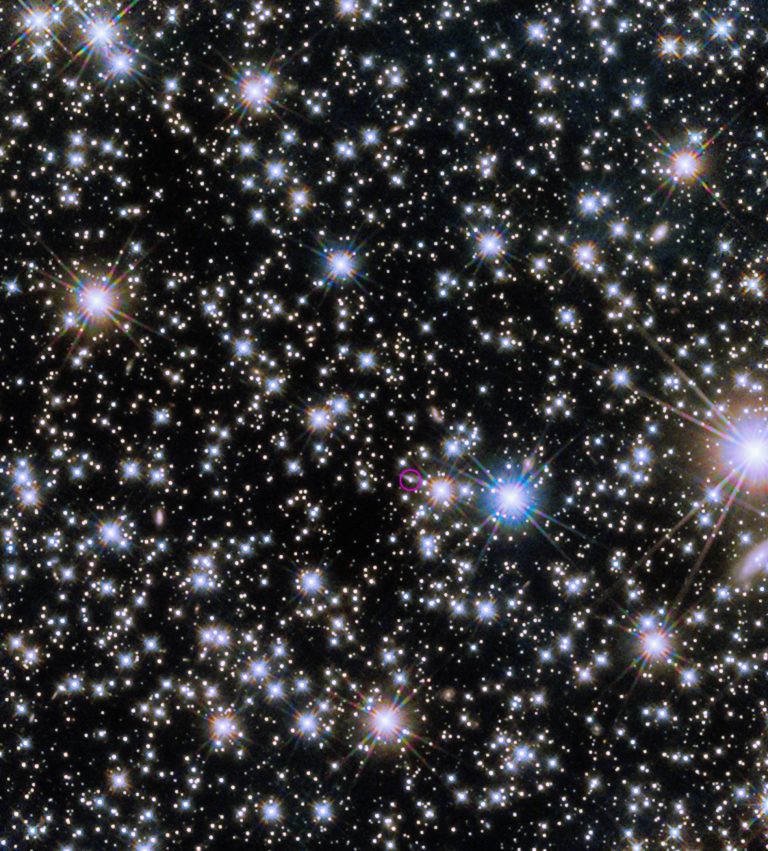哈勃望远镜发现一个有卷须的星系
This image taken with the NASA/ESA Hubble Space Telescope shows JO204, a ‘jellyfish galaxy’ so named for the bright tendrils of gas that appear in this image as drifting lazily below JO204’s bright central bulk. The galaxy lies almost 600 million light-years away in the constellation Sextans. Hubble observed JO204 as part of a survey performed with the intention of better understanding star formation under extreme conditions. While the delicate ribbons of gas beneath JO204 may look like floating jellyfish tentacles, they are in fact the outcome of an intense astronomical process known as ram pressure stripping. Ram pressure is a particular type of pressure exerted on a body when it moves relative to a fluid. An intuitive example is the sensation of pressure you…

